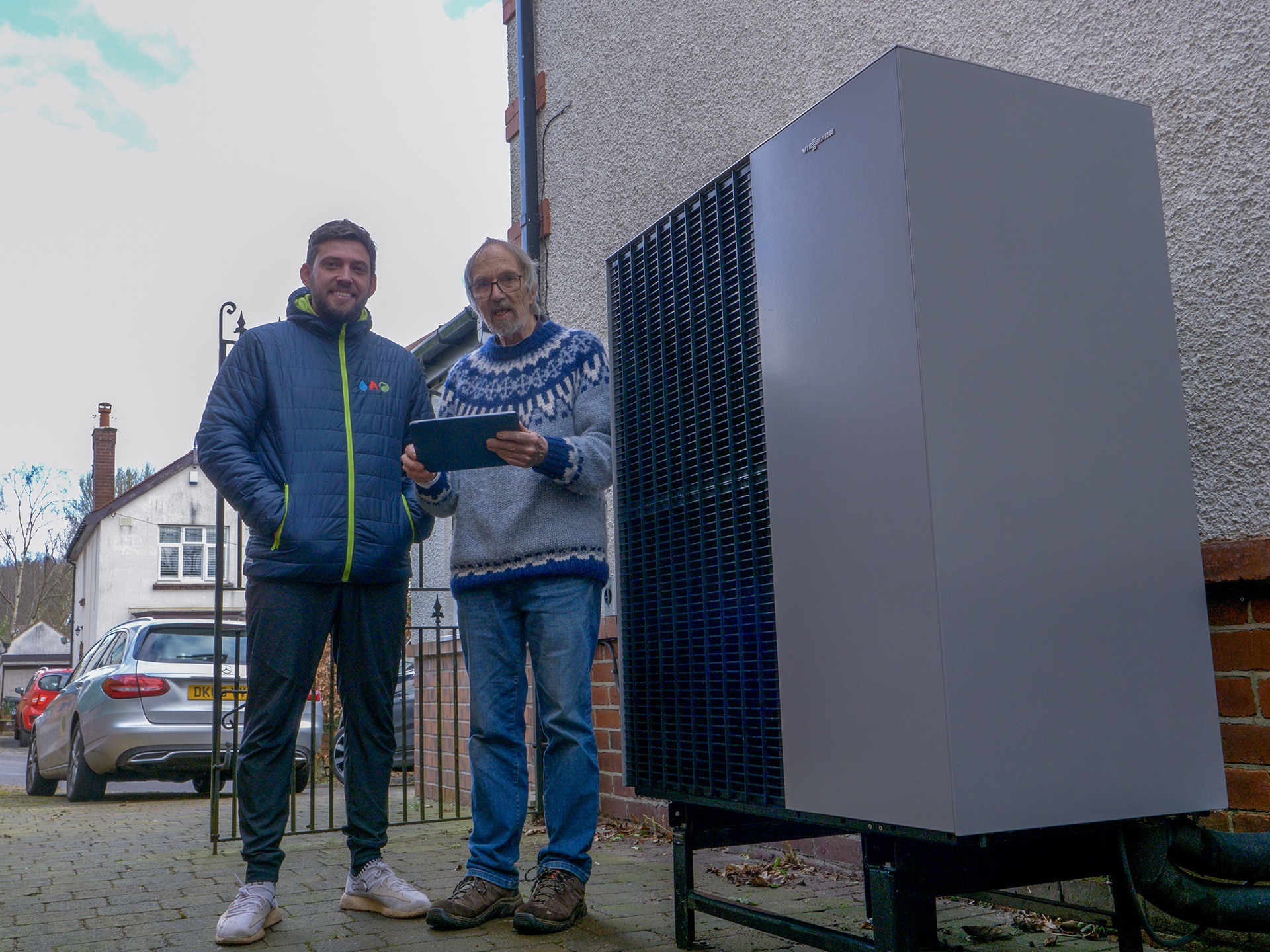Homeowner and installer team up for heat-pump success
Heat pumps often make the headlines for all the wrong reasons. But we met one Yorkshire homeowner who has adopted the technology in his Edwardian home and couldn’t be happier with the results
A desire to regain control of spiralling energy bills and move away from gas motivated Rob Ritchie, a semi-retired chemistry-textbook author from Sheffield, to investigate heat pumps and solar panels. Six months since his new heat pump was installed, his energy costs have turned into profits, his 1928 detached property is more comfortable than it’s ever been, and his system’s performance ranks among the best in the country. Meanwhile, Rob’s heat-pump good-news story shows the value of teaming up with a first-class installer who really understands heat pumps and what they can do.
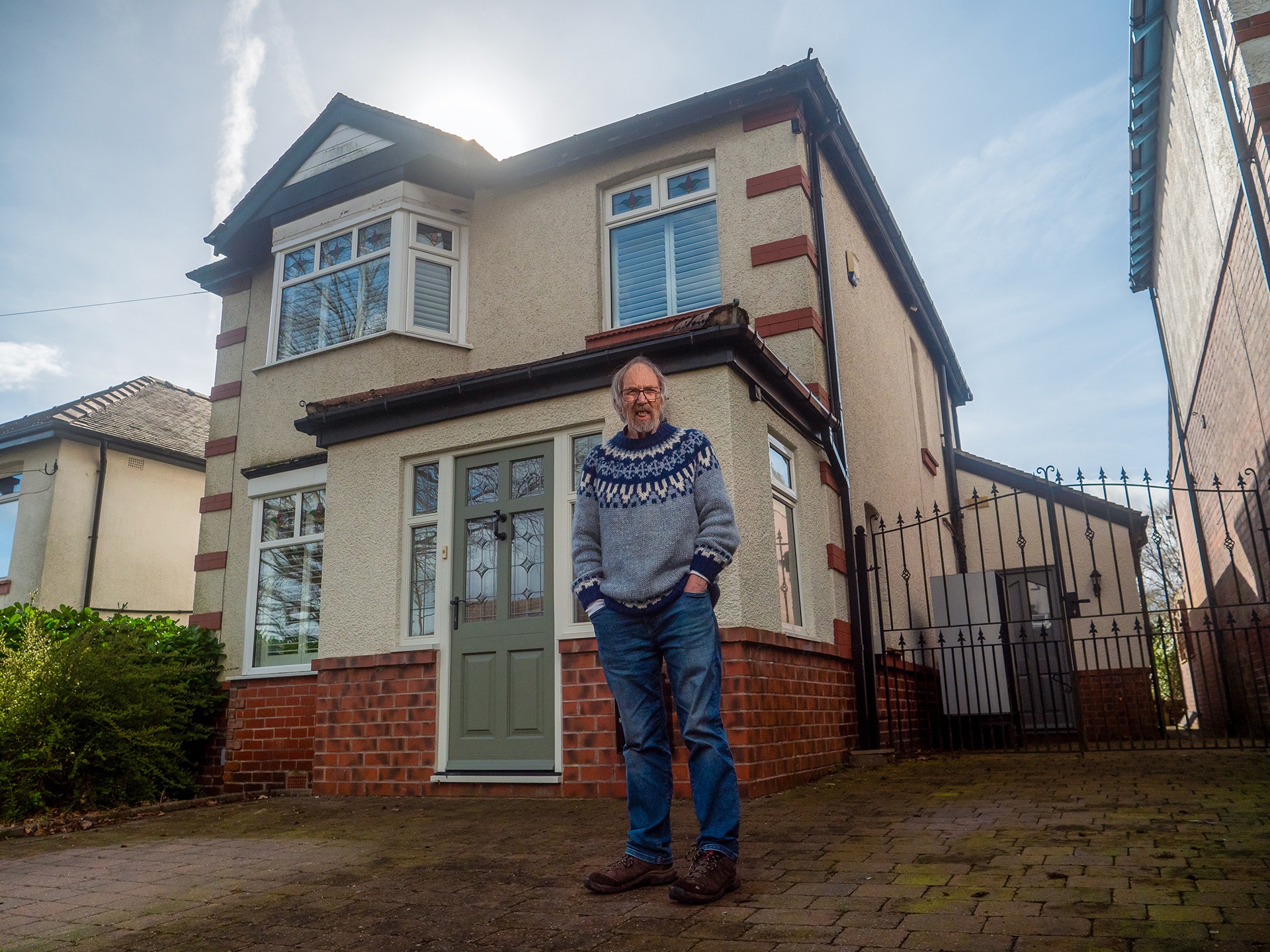
Image credit: Viessmann
Open Energy Monitor
Having an outstanding heat and power system is proving a very gratifying experience for Rob. He finds that he spends quite a lot of his time these days looking at HeatpumpMonitor.org, a site that compares performance data for UK heat pumps running the open source Open Energy Monitor performance-tracking system.
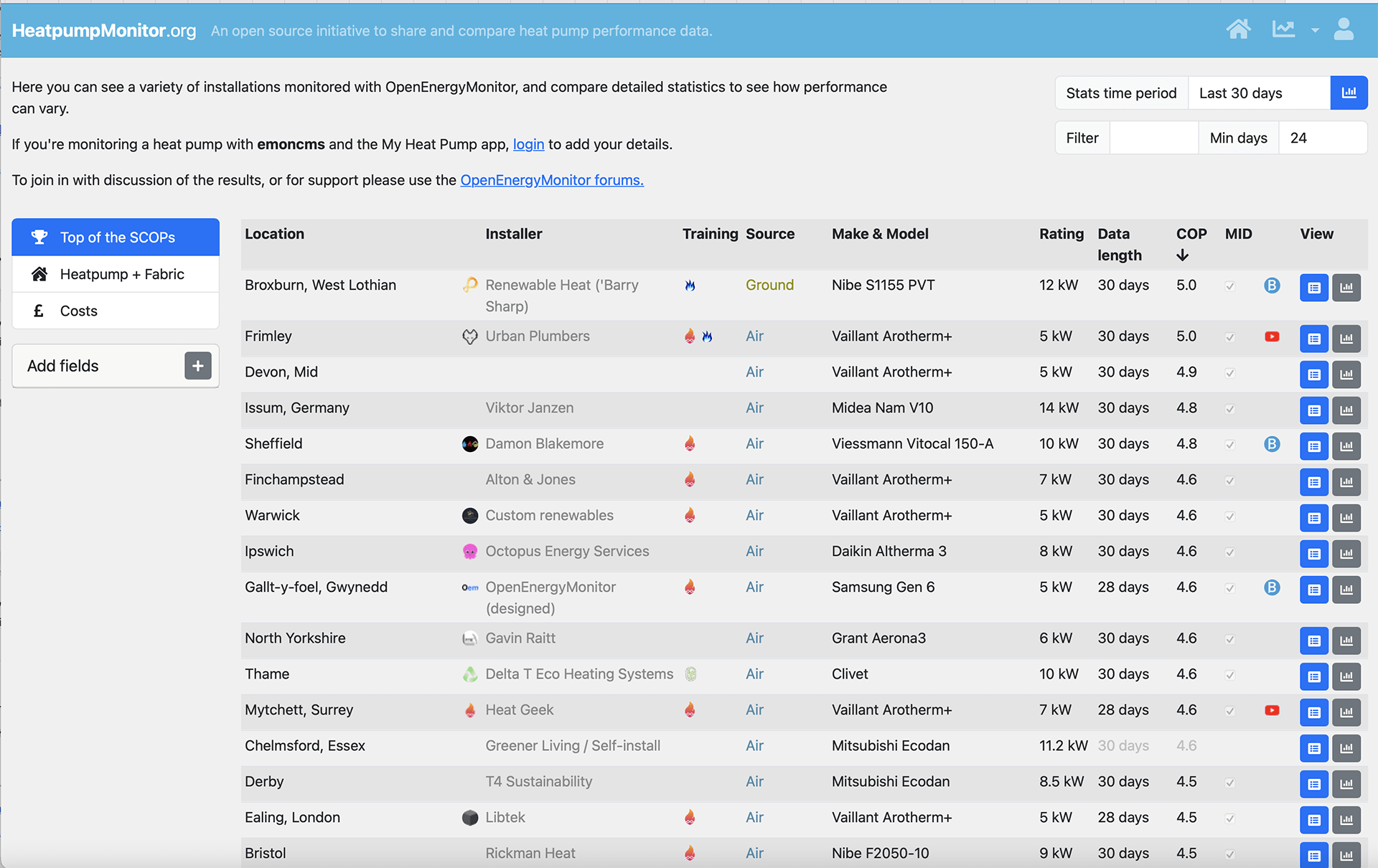
An Open Energy Monitor, such as the one Rob has installed in his heating system, runs open-source software on a simple computer (based on a Raspberry Pi) connected to monitors measuring electricity usage, flow and return water temperatures, etc. Together these measurements allow for very accurate monitoring of a heat pump’s efficiency. The data from each Open Energy Monitor can be fed to the online “heat-pump efficiency chart” at HeatpumpMonitor, which ranks heat pumps according to their Coefficient of Performance (CoP). The CoP of a heat pump is the ratio of useful heat energy produced to electrical energy used. So, for example, a CoP of 3 means that a heat pump outputs three times as much energy as it consumes. Heat pumps, generally, have the potential to be very efficient.
Coefficient of Performance
“It’s the best kind of timewaster,” says Rob of his heat pump’s monitor system. “You can look in detail at how things are working.” And things seem to be working very well. Since it was commissioned in August 2023, Rob’s air-to-water air-source heat pump has consistently been near the top of the chart, ie one of the most efficient in the country being monitored by the Open Energy Monitor kit. “Through December, my average CoP was 5.4, which is outstanding,” Rob says with pride.
Air-source heat pumps are expected to have a minimum CoP of 2.5 to 2.8, although when installed to the manufacturer’s instructions a Viessmann Vitocals like Rob’s should score above 4. The gas combi boiler the heat pump replaced could only achieve a maximum CoP of 0.94, or 94% efficiency, even when running at the lowest possible flow temperature to maximise efficiency.
Rob’s two-year journey to energy excellence has not been entirely straightforward, however. “I’ve learned so much,” he says. “I just wish I’d known at the outset what I know now.”
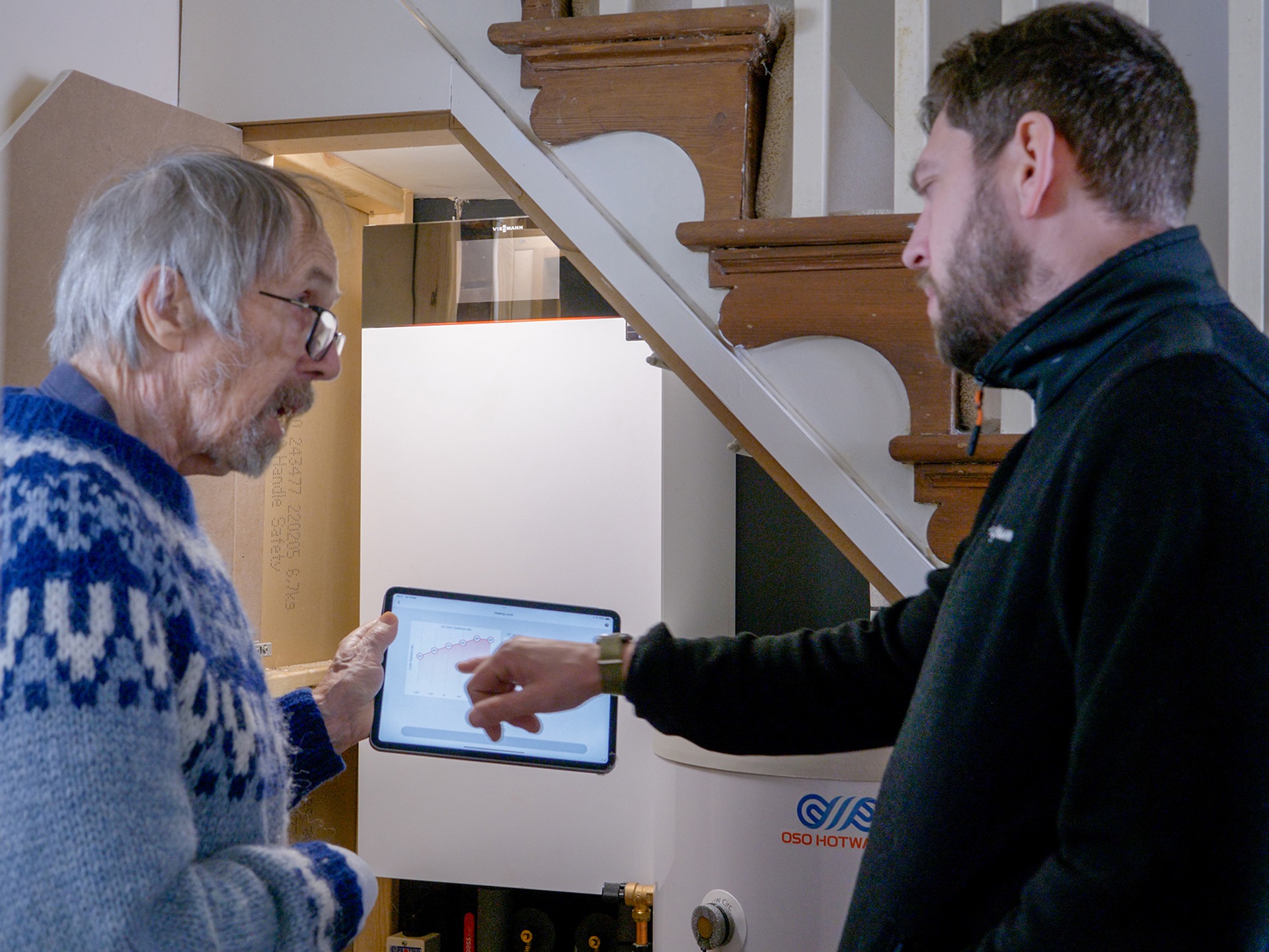
Image credit: Viessmann
Starting with solar
The energy price hike that followed the start of the Ukraine war in 2022 was what originally prompted him to think about better ways to heat and power his three-bedroomed house. He recalls, “The immediate thing I could do to gain more control was get solar panels.”
These were installed in August 2022, together with a battery to store the excess power generated, for use at night. “I liked the idea of getting free electricity,” continues Rob. “But I also wanted to use the solar energy for heating water. The problem with doing that with the solar panels using my existing combi boiler at the time was that I didn’t have a cylinder.”
Rob also took the opportunity to add “a lot” of insulation to his home, particularly underneath the ground floor. And this must, surely, be playing a part in his heat-pump success story.
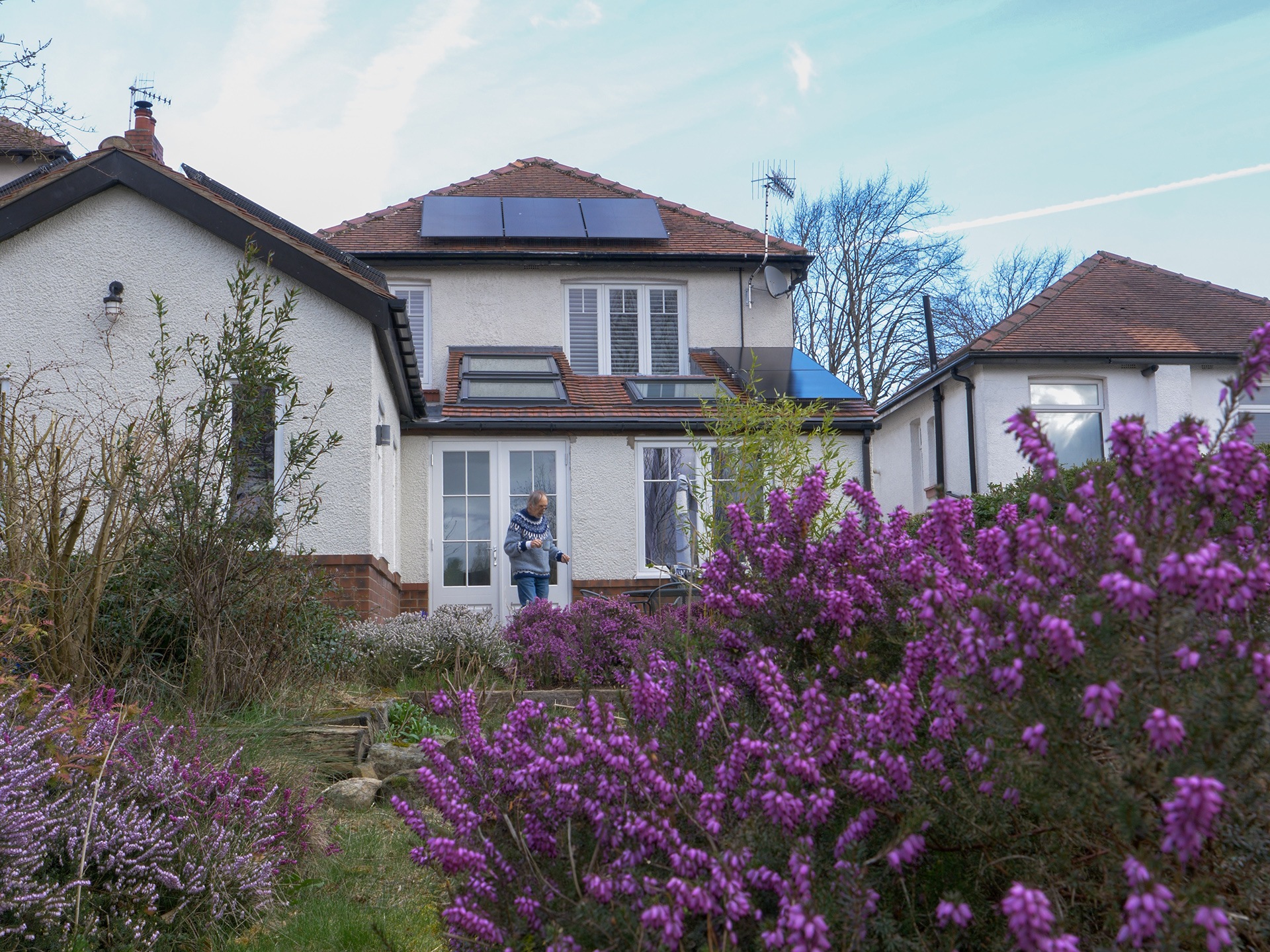
Image credit: Viessmann
Award-winning installer
Researching water cylinders eventually led him to renewables enthusiast Mick Wall of energy-price-tracking blog Energy Stats UK. “It was actually Mick that got me thinking about heat pumps,” says Rob. “On his brilliant blog I came across a piece about water cylinders and plant rooms and found it very interesting. Mick had named Damon Blakemore, from Blakemore Plumbing and Heating, as the installer behind his cylinder and heat pump. So I contacted Damon, knowing that the success of any heating system is dependent on both the efficiency of the product, and on an installer who knows it inside out.
“I initially asked Damon about getting a solar diverter put in, but we couldn’t get hold of one. Then, in December 2022, I started looking at mixed heat-pump systems. I asked Mick and Damon for their advice, and in March 2023, Damon did a heat-loss calculation for me to get the ball rolling.”
Damon – who has been a regional winner and national runner-up in the Heating Installer of the Year awards – takes up the story, “As Rob had already installed PVs (photovoltaics) and a battery, an air-source heat pump was the final piece of the jigsaw to really bring down his bills and carbon emissions. A £5000 grant from the Boiler Upgrade Scheme (which has now increased to £7500) helped to cover the cost.”
Rob’s set-up
Rob’s new installation consists of a Viessmann 10kW Vitocal 150-A heat pump with weather compensation, built-in buffer tank for defrosting, and built-in instantaneous water heater. This is combined with a 200l OSO Geocoil water cylinder. Damon says, “I’d been wanting to install the Vitocal 150-A for a while and this seemed to be the perfect project for it; there was space for the indoor and outdoor units, and I could get the flow temperature down to 40oC.” A low flow temperature maximises the efficiency of the heat pump.
Damon also proposed incorporating the Open Energy Monitor to track performance, an unusual move as the Vitocal does come with its own integrated energy-management and monitoring system. He explains, “Open Energy Monitor is popular among homeowners and installers who want an independent tracker to complement the manufacturer’s onboard monitoring. Rob also really liked the idea of Viessmann’s ViGuide remote app for the engineer and the built-in ViCare heating control app for him. And it’s given us a real insight into how the system runs.”
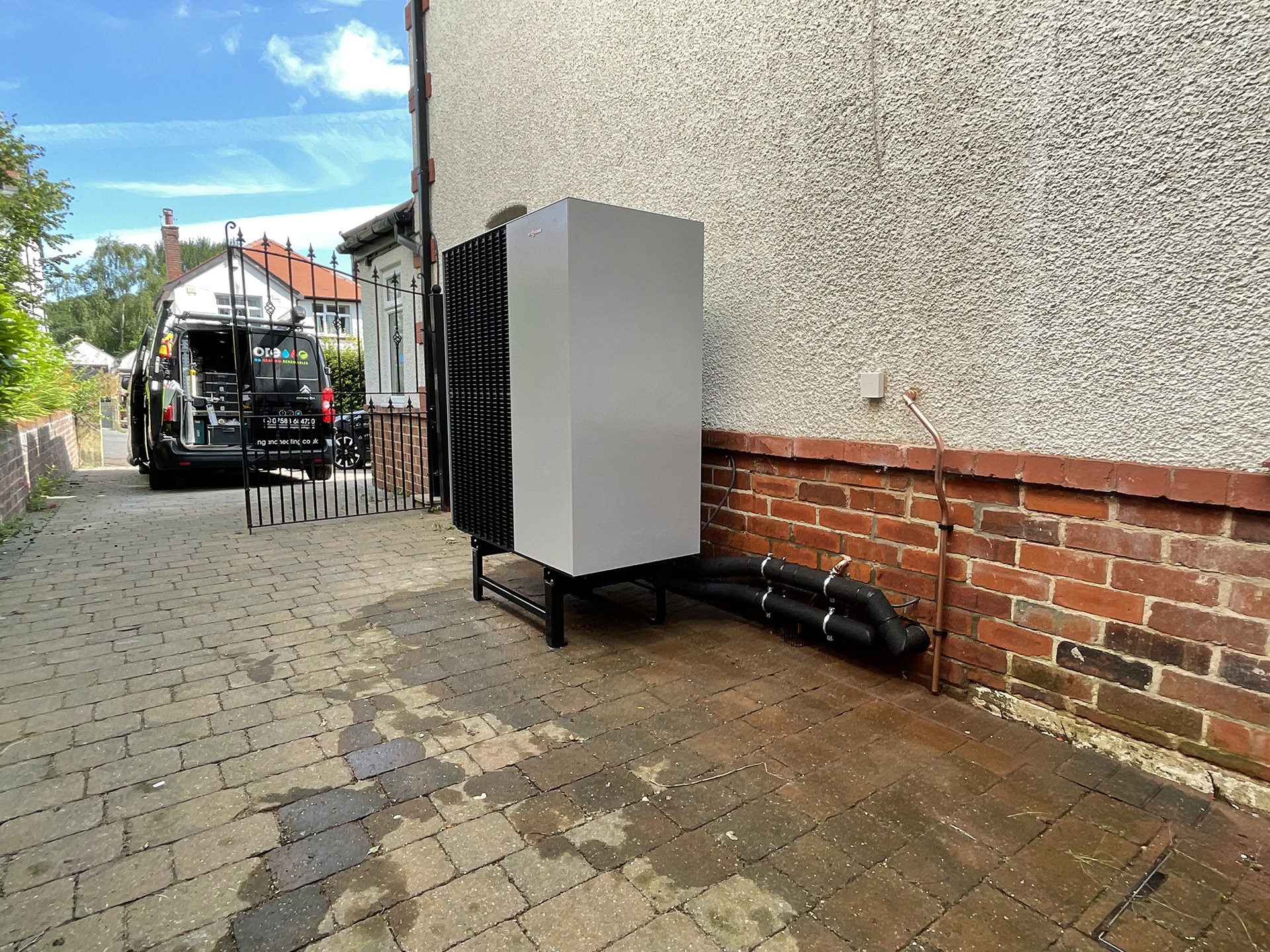
Image credit: Blakemore Plumbing and Heating
Understairs plant room
The heat pump’s outdoor unit has been installed at the side of the house, where Rob says it takes up less space than his wheelie bins, while the indoor unit and water cylinder are in a previously unused area under the stairs. Damon says, “It was a void before and now it’s a plant room – no space has been lost in the property at all.”
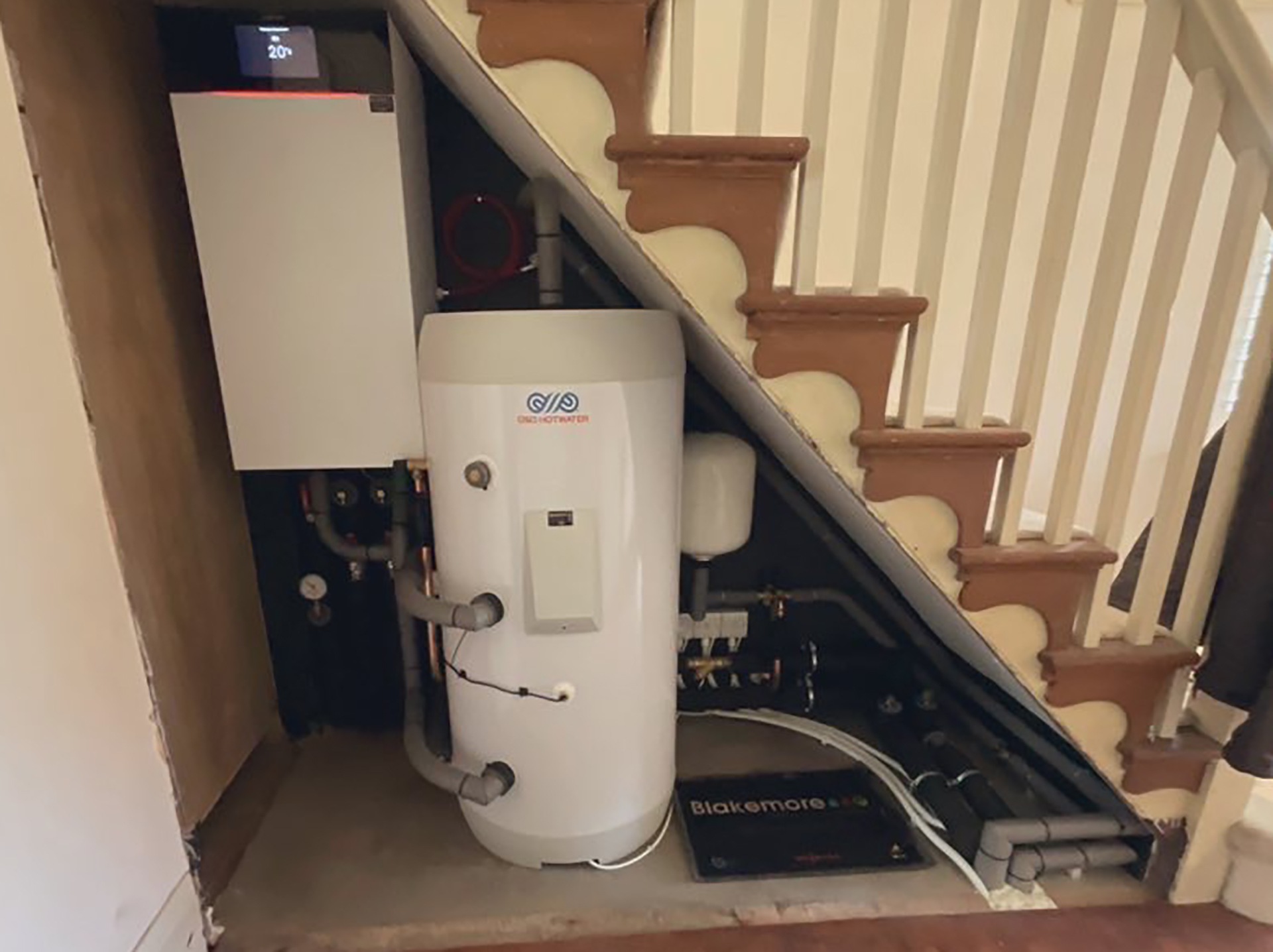
Image credit: Blakemore Plumbing and Heating
No noise problem
According to Rob, the system generates virtually no noise, despite noise being a common concern with heat pumps. “You can hardly hear a thing,” he says.
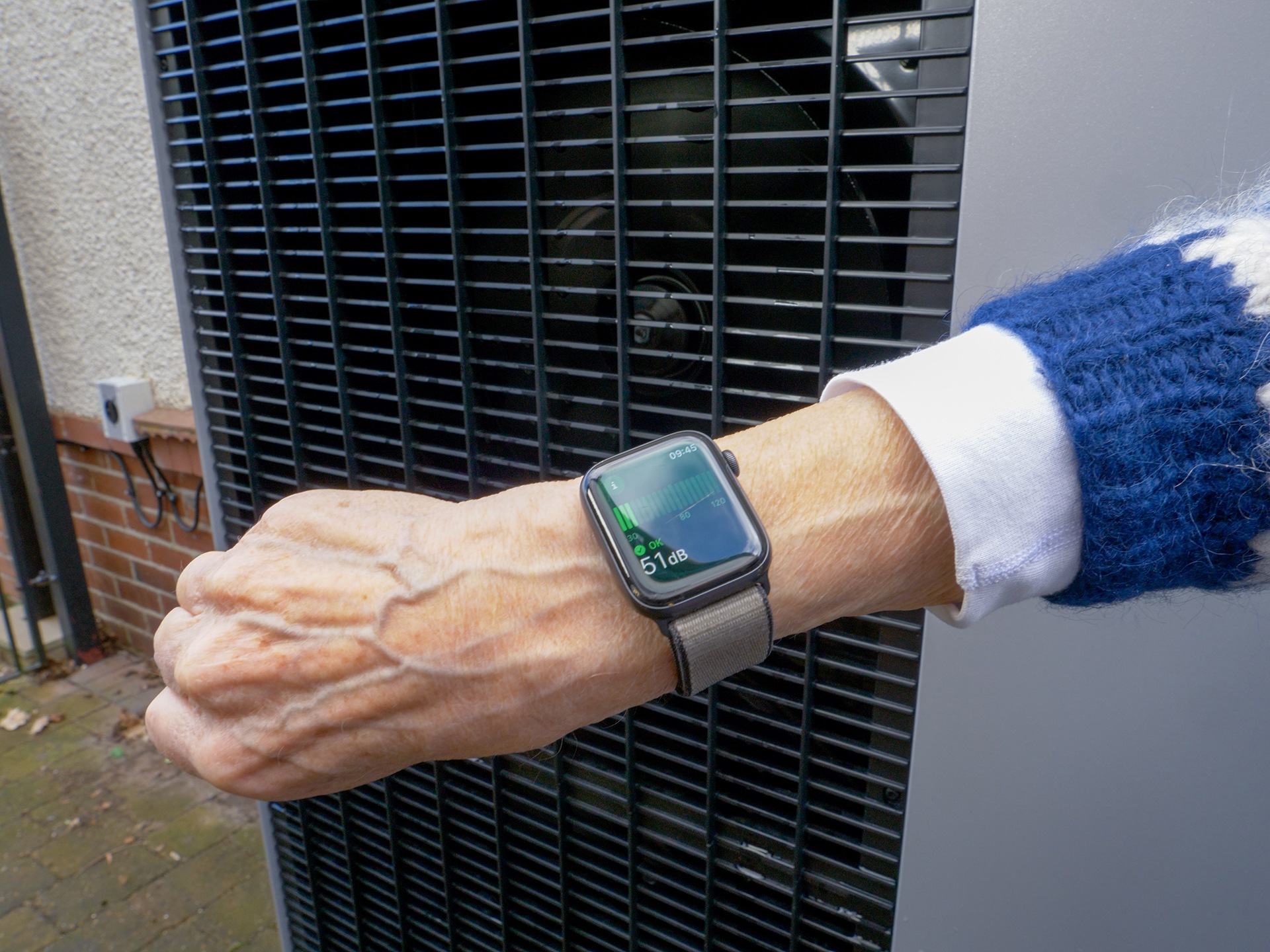
Image credit: Viessmann
Heating all rooms
The Vitocal runs direct via an open circuit, which means the entire property is heated to the same temperature, instead of having individual heating zones. The thermostatic radiator valves are all open, with radiator temperatures controlled by weather compensation. Damon set the radiator sizes based on his heat-loss calculation. Rob explains, “I have my system running at 20oC in the day, then a setback temperature of 17oC at night – but it never drops to that – it’s more often 19oC through the night. Damon has set up the system so that I’m heating every radiator in the house, and it’s all being done solely on weather compensation. Two years ago, with the combi boiler, I was only heating the rooms I used. The trouble with that was, heat was lost from warm rooms to cold rooms. Now, my whole house is more comfortable than ever before.”
Says Damon, “It’s a simple but very, very effective system, as can be seen from the monitoring results we’re getting.”
Buffer tank
One source of the efficiency of Rob’s heat pump is the built-in buffer tank used to manage its defrost cycle. The outdoor unit of a modern air-source heat pump will defrost itself whenever frost occurs, but this can drain energy from the heating system, meaning the homeowner may notice a drop in temperature inside the property at some of the coldest times of the year. Additional energy is then used as the heat pump scrambles to get the property back up to temp, and this impacts efficiency. But the 16l buffer tank in the Vitocal’s indoor unit is designed to prevent this happening by offering a means to better manage the defrost cycle so the pump doesn’t need to “borrow” energy from the home to defrost the outdoor unit. The heat pump preloads the buffer then delivers the water heated to 55oC to the outdoor unit to do the defrosting. This means neither the temperature inside the house nor the pump’s energy efficiency ie affected.
Earning income
For Rob’s new system to generate profit by selling excess solar electricity to the grid instead of costing money to run, the heat pump needs to operate with a CoP of at least 3.5. In fact, it has been averaging almost double that at 4.7 (that’s 470% efficiency). “Last June, I made £300 profit in a single month from my solar,” says Rob. “Obviously, in winter, I’m paying for electricity, but it’s five times cheaper than it was because of the heat pump’s CoP multiplication factor. At the start of January 2024, I was £400 up on the year. And this is for electricity, where I was previously paying for gas.”
Rob feels that using the heat pump to heat his domestic hot water has been a good choice, too. He explains, “It now costs me around 6p to heat the water tank every two days. When I had the gas combi boiler, a typical shower would use something like ten times the amount of energy it does now. To say I’m pleased would be an understatement!”
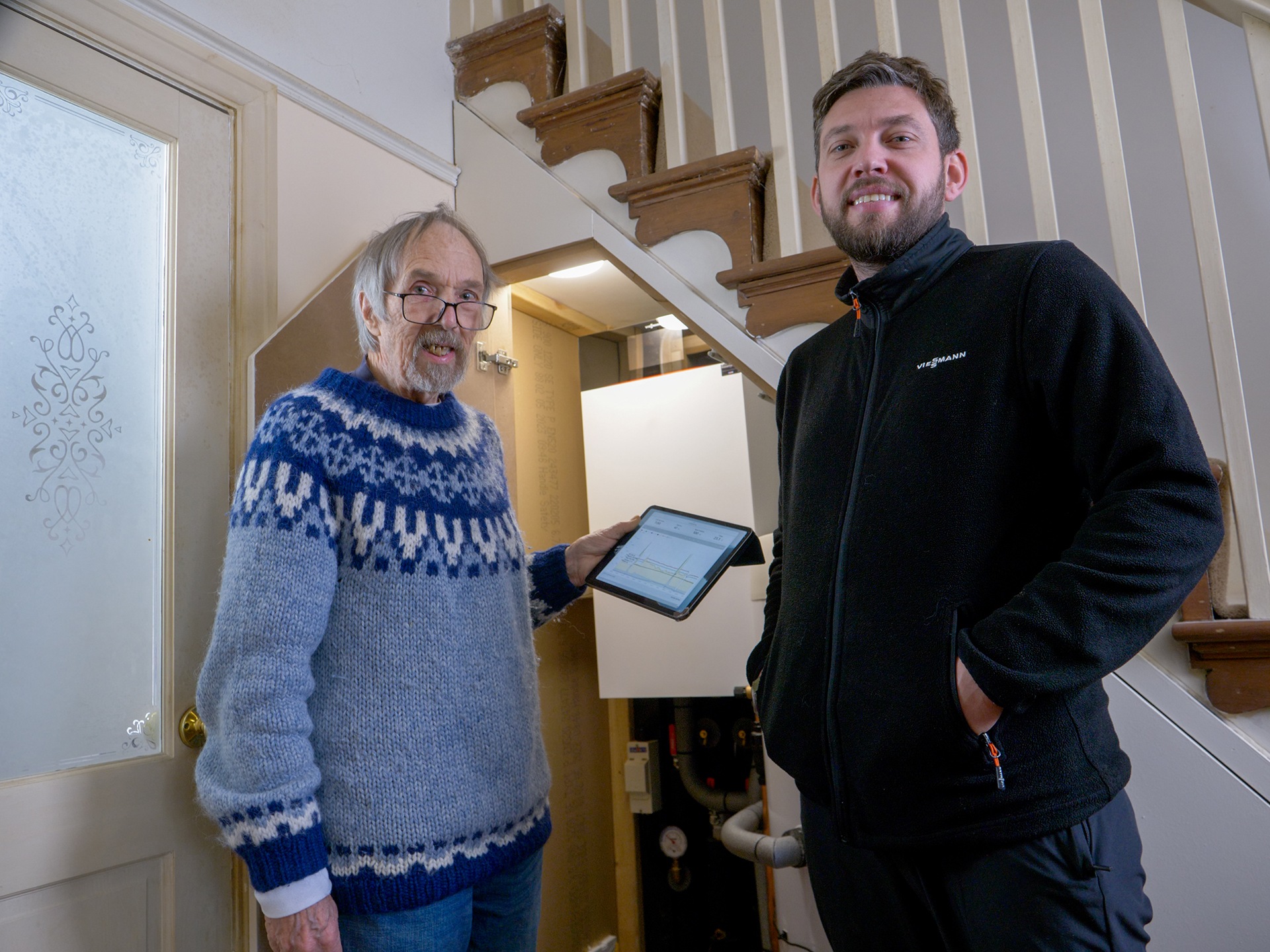
Image credit: Viessmann

